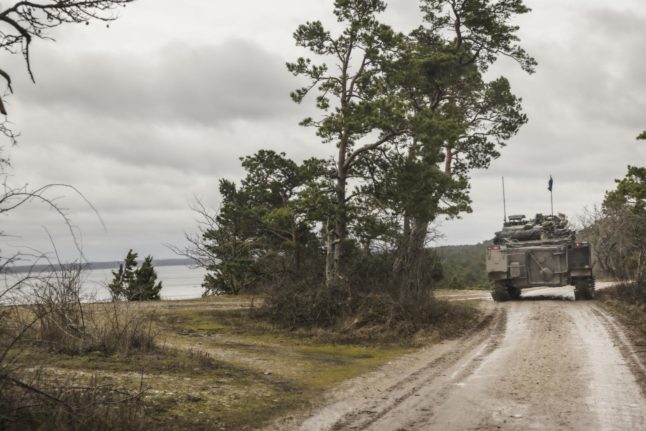Kristersson handed over Sweden’s instrument of accession at a meeting with US Secretary of State Antony Blinken, bringing to an end more than 200 years of neutrality and non-alignment.
The handover took place at 5.25pm Swedish time, only a few hours after Hungary handed over its ratification of Sweden’s membership, meaning all 31 existing Nato members have ratified Sweden’s accession.
“Good things come to those who wait. No better example,” Blinken said after he received the documents, calling Sweden’s accession “a historic moment”.
“None of this was foreseeable,” he added. “Sweden had a 200-year-old policy of non-alignment and before Putin’s re-invasion of Ukraine… less than a third of Swedes supported joining Nato.”
“Today is a truly historic day. Sweden is now a member of Nato,” Kristersson said when he took to the platform, thanking Blinken and US President Joe Biden for their “invaluable efforts and personal commitments” in supporting Sweden’s membership.
“We are humble but we are also proud. We will live up high expectations of all Nato members,” he said. “It’s a victory for freedom today…Sweden is leaving 200 years of neutrality and military non-alignment behind. It is a major step but a very natural step.”
The decision brings an end to a long-drawn out process, which has seen first Turkey and then Hungary delay their ratifications of Sweden’s accession, meaning Sweden becomes a member nearly two years after formally asking to join on May 16th 2022.
Russia’s February 2022 invasion prompted Sweden and neighbouring Finland to apply to join the bloc, ending a long-standing stance of non-alignment in both countries.
Russia has vowed “countermeasures” over Sweden’s entry into Nato, especially if the alliance’s troops and assets deploy in the country. Sweden and Finland, while both militarily intertwined with the United States and members of the European Union, have historically steered clear of officially joining Nato, formed in the Cold War to unite against the Soviet Union.
The day’s events started with Hungary depositing its documents ratifying Sweden’s membership, after which Nato Secretary General Jens Stoltenberg formally invited Sweden to accede to the North Atlantic Treaty in a letter to Kristersson, while the US White House welcomed Sweden as a member of the alliance, writing in a depository notification that “the conditions for entry” had now been met.
READ ALSO:
Following Stoltenberg’s invitation, Sweden’s government held an extraordinary meeting at which it formally decided to join Nato.
“This marks the beginning of a new chapter in the history of the Kingdom of Sweden,” Deputy Prime Minister Ebba Busch said at a press conference in the Rosenbad Palace. “Entering Nato is a historic event of some magnitude, a milestone for our country. This is also a recognition of where Sweden’s home is from a security perspective. We belong among the free democracies of the West.”
“Sweden is well prepared for Nato membership,” Sweden’s defence minister, Pål Jonson, posted on X. “The armed forces and other government authorities have devoted great effort to making the country ready for Nato membership since we applied for membership in 2022.”
Kristersson then signed the accession documents shortly after 4pm Swedish time, meeting Blinken an hour later.
At 7pm Swedish time, Kristersson gave a televised address to the nation in which he explained the gravity of the step Sweden had taken and gave some of the credit to the Social Democrat government which began the process.
“Nato membership is a collective success for Sweden,” he said. “The Social Democrats’ leader, Magdalena Andersson, led her party towards a ‘yes’ to Nato membership, at the same time as the Sweden Democrats took a new position and said ‘yes’. This process, which was begun by the former government, has now been completed by my government.”
In an interview with Swedish public broadcaster SVT, Sweden’s opposition leader Magdalena Andersson had formerly said that she and the Social Democrat party she leads had dropped their opposition to Nato membership and started the process because it would improve Sweden’s security.
“I started this process because I judged it best for Sweden and the security of the Swedish people,” she said. “It makes it easier to defend our democracy, our freedom and our way of life.”
Kristersson will now return to Sweden, flying to Nato’s headquarters in Brussels on Monday when the Swedish flag will be raised in a ceremony to celebrate Sweden’s accession.



 Please whitelist us to continue reading.
Please whitelist us to continue reading.
Member comments